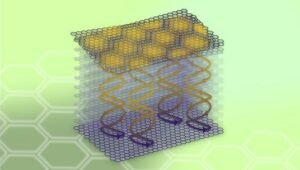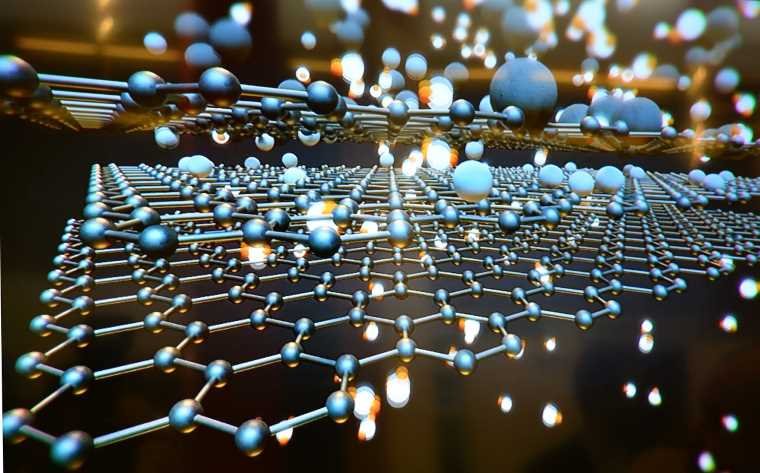What researchers often describe as the more bizarre and exotic properties of 2D materials have been shown to magically transfer to 3D Materials simply by adding a twist. Previously researchers had only witnessed these properties in materials made up of single atoms, making them essentially two dimensions (2D), but this new breakthrough method shows that even some of the most unexpected and unusual properties of 2D materials may soon be put to practical use in a 3D world.
In the 2D Quantum Realm, Things Happen That Seem Impossible
In recent years, physicists and material scientists have begun to assemble and tinker with materials constructed of single atoms in a flat plane. The resulting 2D material is not only incredibly strong and durable, depending on the type of atoms used, but has also been shown to do rather unusual things simply due to the fact that sub-atomic particles like electrons can only travel along them in two dimensions.
For example, The Debrief previously reported on something researchers term the “Magic Angle” of 2D materials. In effect, numerous studies have found through verified experimentation that if two layers of 2D materials are laid on top of each other and then twisted, all sorts of bizarre and exotic things occur at the quantum level.
“Today, we understand better, even at just the stacking level, how these materials behave,” said theoretical physicist and UCR Professor Vivek Aji in a previous story for The Debrief. “In twisting, you arrive at a series of ‘magic angles’ where certain aspects repeat. Twisting is the future in this line of research.”
As noted, some of those properties include superconductivity, unexpected magnetism, and even the ability to manipulate and control light.
Now, a team of researchers from the University of Washington (UW) says they are exploring a way to effectively transfer those exotic properties from a 2D material to a 3D one. And based on their published research, their results may be the most bizarre thing of all
3D Materials May Finally Get Into the Bizarre and Exotic Business
Among the most common and most studied 2D materials is something called graphene, which is simply a two-dimensional sheet of individual carbon atoms connected together. In the published study, which appeared in the journal Nature, the Washington researchers wanted to see if they could impart the properties of 2D graphene to 3D graphite, a three-dimensional material that is also made up of carbon atoms. For reference, the material in a No. 2 pencil is graphite.
“Stacking single layer on single layer — or two layers on two layers — has been the focus for unlocking new physics in 2D materials for several years now,” said senior author Matthew Yankowitz, a UW assistant professor of physics and of materials science and engineering. “In these experimental approaches, that’s where many interesting properties emerge.”
But what happens if you keep adding 2D layers until you have a 3D structure?
“Eventually, it has to stop, right?” Yankowitz asks. “That’s what intuition suggests. But in this case, intuition is wrong. It’s possible to mix 2D properties into 3D materials.”
The researchers stumbled upon this unexpected transfer of bizarre and exotic properties by placing a single layer of 2D graphene on top of a graphite crystal. Next, the researchers twisted the graphene sheet to a precise 1.08-degree angle, the magic angle, much like they would do with two sheets of single-layer graphene. But this time, they were only twisting a single layer. Then they turned on a magnetic field, and that’s when things started to get weird.
Somewhat unexpectedly, the unusual properties typically seen when twisting two sheets of graphene magically showed up. In effect, the team found that the “magic angle” seemed to exist between the 2D and 3D materials. Even more significant, the press release announcing the unexpected results says the novel electrical properties seemed to propagate “deep into the bulk” of the 3D graphite crystal, not just at the surface where it was in contact with the 2D graphene.
“Electrons deep in the graphite crystal adopted unusual properties similar to those of electrons at the twisted interface,” they explain.
The researchers also found that just like 2D materials that are twisted together, the 2D/3D combo created something called a moiré pattern. This magic angle pattern “alters the flow of charged particles like electrons and induces exotic properties in the material,” something previously seen only in paired 2D sheets.
“Though we were generating the moiré pattern only at the surface of the graphite, the resulting properties were bleeding across the whole crystal,” said co-lead author Dacen Waters, a UW postdoctoral researcher in physics.
“The entire crystal takes on this 2D state,” added co-lead author Ellis Thompson, a UW doctoral student in physics. “This is a fundamentally new way to affect electron behavior in a bulk material.”


How Novel 2D Properties Could Become a 3D Material Revolution
Because magic angle physics (twistronics is another name adopted by some researchers) is still in its infancy, physicists and material scientists are just now beginning to look at practical ways these novel phenomena can be used. Some applications include microelectronics designed to take advantage of these properties to accelerate processing or increase energy efficiency.
In the most extreme cases, things like magnetism and superconductivity can open up all kinds of unexpected doors to devices previously never even considered under classical physics. Think superior night vision, Star Trek transporters, or even Warp Drives.
Ultimately, there are a lot of areas to explore, and now that these properties have been shown to be transferrable from a 2D structure to a 3D one, the researchers think that almost anything might be possible.
“This method could become a really rich playground for studying exciting new physical phenomena in materials with mixed 2D and 3D properties,” said Yankowitz.
Christopher Plain is a Science Fiction and Fantasy novelist and Head Science Writer at The Debrief. Follow and connect with him on X, learn about his books at plainfiction.com, or email him directly at christopher@thedebrief.org.

